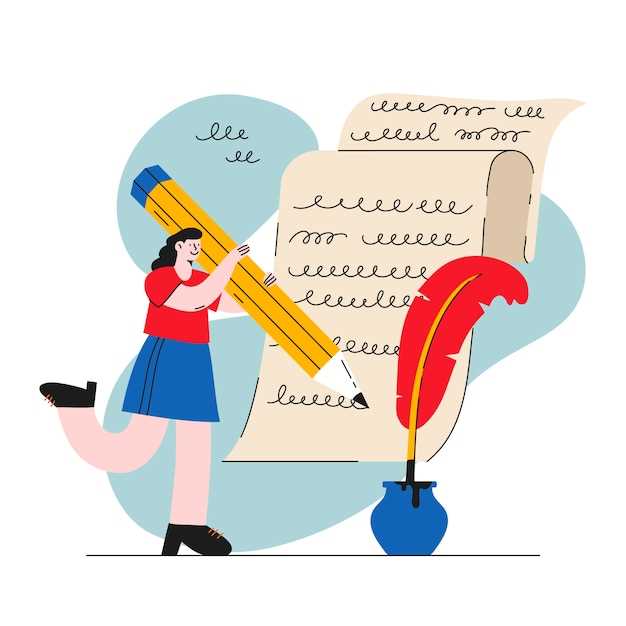
Begin with a question that sparks curiosity. For example, “What would happen if every student could capture their reader’s attention in just three sentences?” This approach immediately engages your audience and sets the tone for a compelling argument. Questions work because they invite the reader to think and stay focused.
Use a surprising statistic or fact. If you’re writing about education, start with “Over 60% of professors admit they form their first impression of an essay within the opening lines.” This grabs attention and establishes relevance. Make sure your data is accurate and directly tied to your topic.
Incorporate a short, vivid anecdote that relates to your main point. For instance, “Last year, a student doubled their essay grade simply by crafting a more engaging introduction.” Stories like this stick in the reader’s mind and show the practical value of your advice.
Keep your opening sentences concise and avoid overloading them with details. Aim for clarity and impact. For example, “A strong introduction doesn’t just inform–it captivates.” This style is direct and leaves a lasting impression.
Practice tailoring your approach to different essay types. A persuasive essay might start with a bold statement, while an analytical piece could open with a thought-provoking observation. Adapting your strategy ensures your introduction aligns with your overall goal.
Finally, revise your opening paragraph multiple times. The first draft rarely captures the perfect tone or structure. Polish it until it feels seamless and intentional. This extra effort makes a noticeable difference in your work’s overall quality.
Craft a Clear Thesis Statement in 3 Steps
Identify your main argument by asking, “What is the central point I want to make?” Focus on one specific idea to keep your thesis concise and direct.
- Narrow your topic: Avoid broad subjects. For example, instead of “climate change,” focus on “the impact of deforestation on local wildlife.”
- Take a position: State your stance clearly. For instance, “Renewable energy policies are essential for reducing carbon emissions” is more effective than a neutral statement.
- Provide a roadmap: Briefly outline the key points your essay will cover. For example, “This paper will examine the economic, social, and environmental benefits of urban green spaces.”
Revise your thesis to ensure it’s specific, arguable, and supported by evidence. A strong thesis sets the tone for your entire essay.
Hook Your Reader with Proven Techniques

Begin with a surprising statistic or fact that directly relates to your topic. For example, “Did you know that 55% of readers decide whether to continue an essay within the first 15 seconds?” This immediately grabs attention and sets the stage for your argument.
Ask a thought-provoking question that challenges common assumptions. “What if the key to a successful essay isn’t the conclusion, but the first sentence?” Questions like this engage readers by making them curious about your perspective.
Use a vivid anecdote or short story to illustrate your point. “Imagine a student who struggled with essays until they discovered one simple trick–starting with a bold statement.” Stories create an emotional connection and make your content memorable.
Incorporate a relevant quote from a well-known figure or expert. “As Maya Angelou once said, ‘People will forget what you said, but they will never forget how you made them feel.'” Quotes add credibility and depth to your introduction.
End your hook with a clear transition into your main argument. “With these techniques, you’ll not only capture attention but also set the tone for a compelling essay.” This keeps readers engaged and eager to continue.
Use Transition Sentences to Seamlessly Connect Ideas
Start by identifying the relationship between your ideas–whether it’s cause and effect, comparison, or sequence. For example, use “as a result” to show consequences or “similarly” to highlight similarities. This keeps your writing logical and easy to follow.
Place transition words or phrases at the beginning of sentences or paragraphs to guide readers. Words like “however” signal a contrast, while “in addition” introduces supporting points. Avoid overloading with transitions; one per paragraph is often enough.
Match the tone of your transitions to your writing style. In formal essays, opt for phrases like “consequently” or “on the contrary.” For casual pieces, “meanwhile” or “then again” work well. Consistency ensures your writing flows naturally.
Practice combining shorter sentences with transitions to avoid choppiness. Instead of “The data shows a trend. It’s significant,” write “The data shows a trend, and it’s significant.” This creates smoother connections between ideas.
Review your draft to spot gaps between ideas. Add transitions where needed to clarify connections. For instance, if discussing two opposing views, use “on the other hand” to make the contrast clear.
Experiment with different transitions to see what fits best. Over time, you’ll develop a sense of which words or phrases enhance your writing and keep readers engaged.
Avoid Common Mistakes in Essay Openings

Start with a clear thesis statement. Avoid vague or overly broad introductions that fail to guide the reader. A strong thesis provides direction and sets the tone for the entire essay.
Steer clear of clichés and overused phrases. Phrases like “since the dawn of time” or “in today’s society” weaken your opening. Instead, use specific language that reflects your unique perspective.
Don’t overload the first paragraph with details. Save in-depth explanations for later sections. Focus on introducing your main idea concisely and engaging the reader’s interest.
Avoid starting with dictionary definitions. While it might seem helpful, defining a term in the opening often feels redundant and uninspired. Instead, integrate definitions naturally into your argument.
Keep your tone consistent. Shifting between formal and informal language can confuse readers. Choose a style that suits your topic and audience, and maintain it throughout the essay.
Don’t make promises you can’t keep. Avoid statements like “this essay will prove everything” if your argument doesn’t fully support it. Be honest and realistic about your scope.
Proofread for grammar and clarity. Errors in the opening paragraph can undermine your credibility. Take time to revise and ensure your sentences are clear and polished.